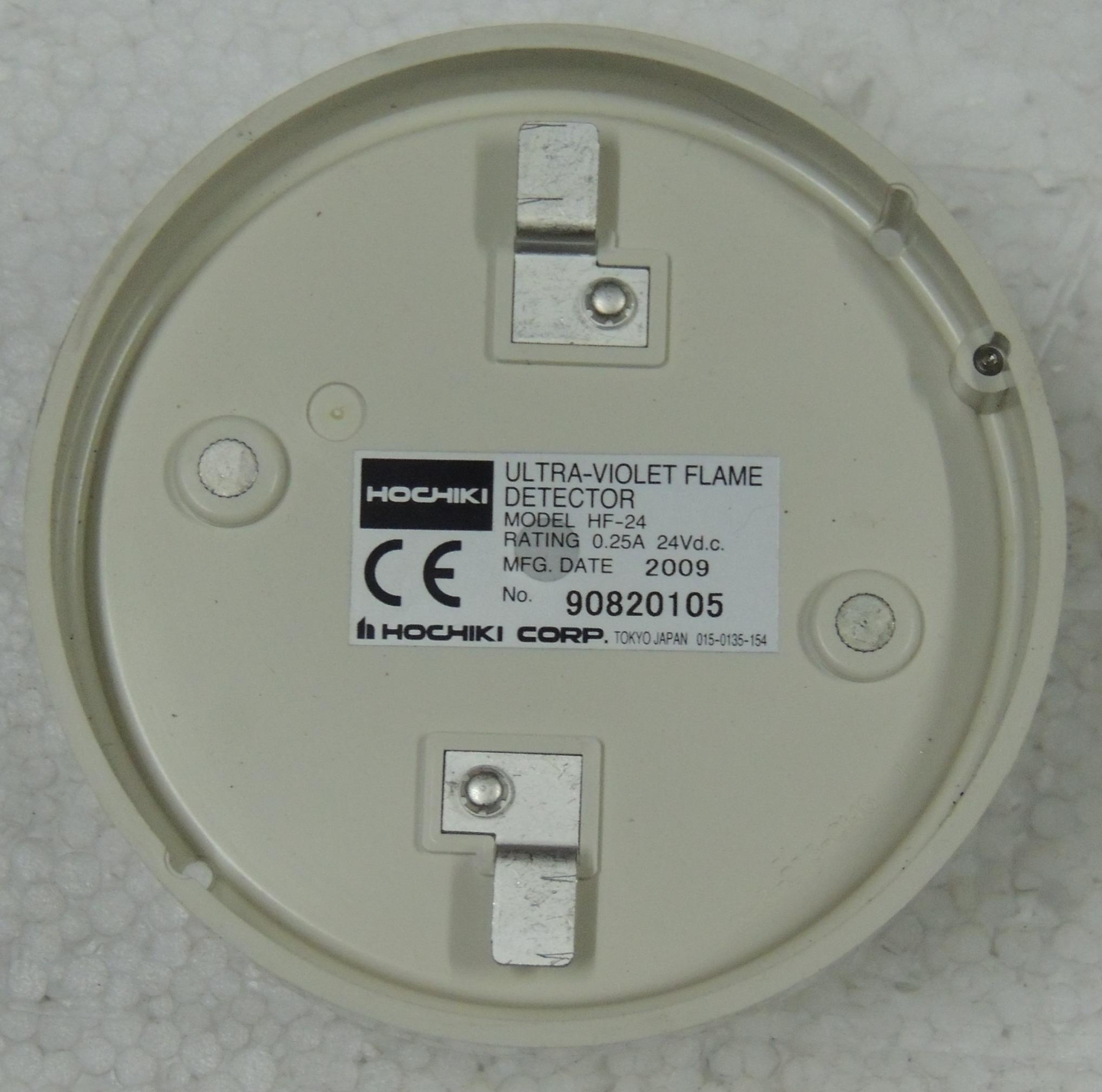HF-24 Ultra-Violet Flame Detector
What is the difference between Rated Voltage and Working Voltage and
maximum switching current (250mA)?
I want to know what is the output of UV detector,is there VOLTAGE or CURRENT?
Please find attached the front and back side of UV Flame Detector.


You want to study the operation principle of Hochiki and similar smoke and fire detection systems. Essentially you have a bus line powered with current limited 24V DC and multiple detectors connected to it in parallel. If one sensor triggers an alarm, it pulls a high current (e.g. 50 to 150 mA) from the line.
Means if one sensor detects flame then all parallel connected detectors will energized and also triggers signal for alarm?
Can we obtain alarm signal from its (HF-24) output terminals by connecting shunt resistor of 2k or 3.9k?
OUTPUT SIGNAL as a VOLTAGE?
Not sure what you consider as shunt resistor? The detector is a two terminal device, it has no separate output terminals.
My question was that what will be the output of flame detector Current or Voltage?
And at long distance how the signal will be transmit as datasheet says Maximum Alarm Switching Current is 250mA.
You will have to ask the manufacturer.
Most devices like this use three wires, two are the supply, the third 'switched' wire is linked to all the other detectors in parallel. The idea is that if one detector senses a flame it operates the alarm on all of them so it is heard over a greater distance. However, the specification in the link does not mention it has a built-in alarm at all so it may use a custom interface designed by Hochiki. It only states it is compatible with their other bases.
Brian.
Why not review the Hochiki product manuals and installation instructions?
